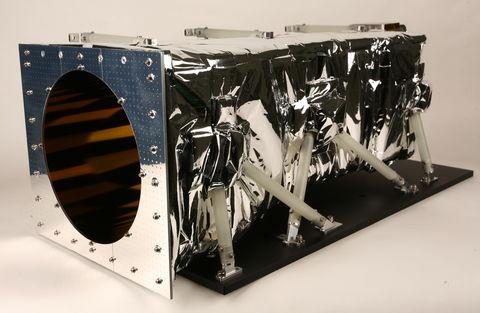Korea Astronomy and Space Science Institute (KASI) is pleased to invite the
observation proposal using MIRIS (Multi-purpose InfraRed Imaging System), the
main payload of Korea Science & Technology Satellite-3 (STSAT-3). The STSAT-3
was launched November 2013, and MIRIS has been carrying out the main missions:
Wide band (1.1 μm and 1.6 μm) observations of the wide fields (about 10°×10°)
toward the north ecliptic and north and south galactic poles for the cosmic
infrared background studies; and
Paα emission survey along the Galactic plane within the galactic latitude of ±3°.
For more details on MIRIS, please refer to Instrument, Surveys, and
For Observers pages of this homepage.
MIRIS is optimized for the near-infrared wide-band observations of background
or diffuse sources and for the Paα emission line observations.
In the case of a proposal for point sources, please check whether the
targets are bright and isolated enough not to be confused with other sources
considering that the resolution of MIRIS is 52 arcseconds.
Any researcher or research group interested in the observations with MIRIS
can submit a proposal.
Submission deadline: 5 June 2015
Submission: Dr. Junghyun Pyo (jhpyo@kasi.re.kr), KASI
Observation period: From 1 July to 30 Nov. 2015 (The period is liable to
change depending on satellite operation by SaTReC, the responsible
institution for satellite management.)
Limit of number of observations: 30 times (One observation can
obtain an image of about 3.7°×3.7° area with a single filter. If more
number of observations are required, please discuss details with contact
point before submit a proposal.)
Before submitting a proposal, please check whether the targets were not
already observed by MIRIS and are visible with MIRIS using the tools in
For Observers page.
-
The proposal should be prepared in MS Word format and contain the
followings:
Title
PI and Co-PIs with affiliation of each person
Purpose of observation(s) and scientific justification
Required sensitivity and area
List of observation target(s) (name and coordinates of each target)
The decision of acceptance will be made by the proposal review committee.
Researches collaborating with Space Astronomy Group in KASI are recommended.
Contact point: Dr. Wonyong Han, MIRIS Project PI, KASI (whan@kasi.re.kr, 010-3457-3219)
